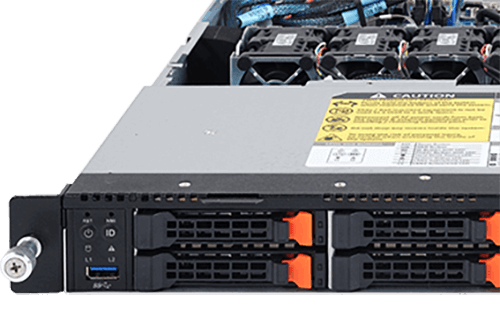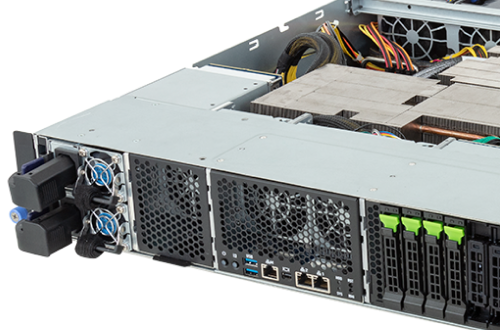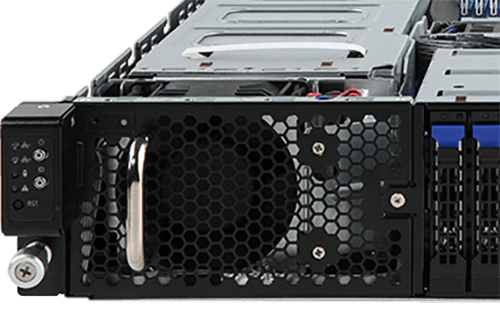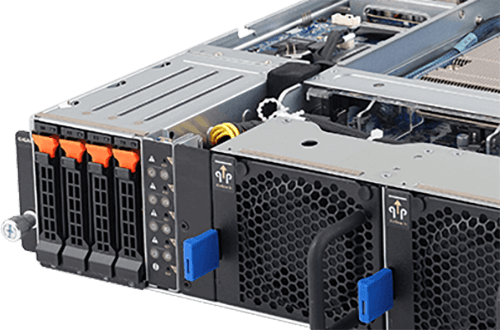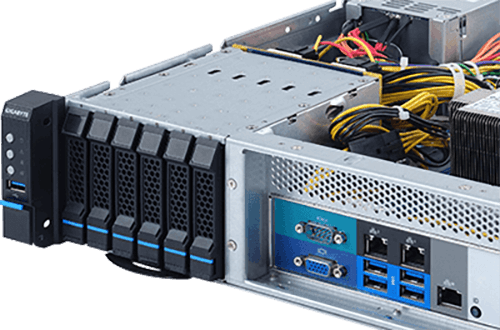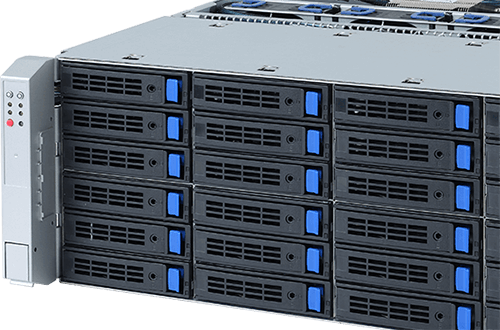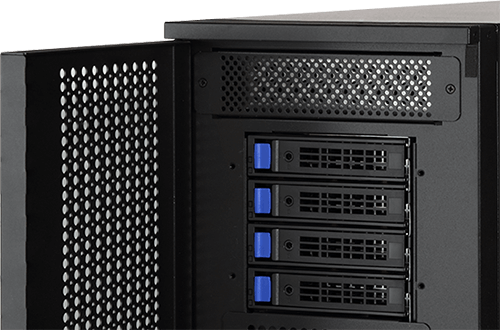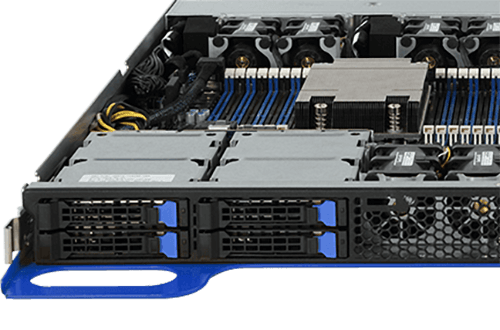HPC
What is it?
High Performance Computing, or HPC, refers to the ability to process data and perform calculations at high speeds, especially in systems that function above a trillion floating point operations per second (teraFLOPS). The world's leading supercomputers operate on the scale of petaFLOPS (quadrillion floating point operations per second), whereas the next goalpost is “exascale computing”, which functions above a quintillion floating point operations per second (exaFLOPS).
To achieve this level of performance, parallel computing across a number of CPUs or GPUs is required. One common type of HPC solutions is a computing cluster, which aggregates the computing power of multiple computers (referred to as "nodes") into a large group. A cluster can deliver much higher performance than a single computer, as individual nodes work together to solve a problem larger than any one computer can easily solve.
Learn more : 《What is HPC? A Tech Guide by GIGABYTE》
To achieve this level of performance, parallel computing across a number of CPUs or GPUs is required. One common type of HPC solutions is a computing cluster, which aggregates the computing power of multiple computers (referred to as "nodes") into a large group. A cluster can deliver much higher performance than a single computer, as individual nodes work together to solve a problem larger than any one computer can easily solve.
Learn more : 《What is HPC? A Tech Guide by GIGABYTE》
Why do you need it?
Acquiring HPC capabilities for your organization is important, whether it is through a computing cluster or high-end mainframe computer. HPC can solve problems in science, engineering, or business. Examples include:
Science: HPC is used by scientists at universities and research institutes to understand the formation of our universe, conduct research into particle physics, or simulate and predict climate and weather patterns.
Media & Entertainment: HPC solutions such as render farms can be used to render animations and special effects, edit feature films, or livestream special events globally.
Artificial Intelligence: A particular subset of HPC that is currently very popular is machine learning, which is used to develop a myriad of artificial intelligence applications, such as generative AI, self-driving vehicles, facial recognition software, speech recognition and translation, or drone technology.
Oil and Gas: HPC is used to process data such as satellite images, ocean floor sonar readings, etc., in order to identify potential new deposits of oil or gas.
Financial Services: HPC is used to track stock trends and realize algorithmic trading, or analyze patterns to detect fraudulent activity.
Medicine: HPC is used to help develop cures for diseases like diabetes, or to enable faster and more accurate diagnosis methods, such as cancer screening techniques.
Science: HPC is used by scientists at universities and research institutes to understand the formation of our universe, conduct research into particle physics, or simulate and predict climate and weather patterns.
Media & Entertainment: HPC solutions such as render farms can be used to render animations and special effects, edit feature films, or livestream special events globally.
Artificial Intelligence: A particular subset of HPC that is currently very popular is machine learning, which is used to develop a myriad of artificial intelligence applications, such as generative AI, self-driving vehicles, facial recognition software, speech recognition and translation, or drone technology.
Oil and Gas: HPC is used to process data such as satellite images, ocean floor sonar readings, etc., in order to identify potential new deposits of oil or gas.
Financial Services: HPC is used to track stock trends and realize algorithmic trading, or analyze patterns to detect fraudulent activity.
Medicine: HPC is used to help develop cures for diseases like diabetes, or to enable faster and more accurate diagnosis methods, such as cancer screening techniques.
How is GIGABYTE helpful?
GIGABYTE Technology offers a comprehensive line of HPC Servers, which comprise H-Series High Density Servers, G-Series GPU Servers, R-Series Rack Servers, and more. These solutions are optimal for HPC applications because they provide impressive computing power in chassis with sizes ranging from 1U to 5U. The servers can be linked into a cluster via interconnects such as Ethernet, Infiniband, or Omni-Path.
An example of GIGABYTE's HPC server solution is the H263-Series, which support NVIDIA's Grace Superchip or Grace Hopper architecture. The G593-Series integrates NVIDIA HGX H100 8-GPU, one of the most powerful computing modules in the world, to create an advanced server solution for AI training. The general-purpose R263-Series is powered by the latest AMD EPYC™ 9004 or 4th Gen Intel® Xeon® CPUs and can be employed for various tasks of the client's choosing.
An example of GIGABYTE's HPC server solution is the H263-Series, which support NVIDIA's Grace Superchip or Grace Hopper architecture. The G593-Series integrates NVIDIA HGX H100 8-GPU, one of the most powerful computing modules in the world, to create an advanced server solution for AI training. The general-purpose R263-Series is powered by the latest AMD EPYC™ 9004 or 4th Gen Intel® Xeon® CPUs and can be employed for various tasks of the client's choosing.
WE RECOMMEND
RELATED ARTICLES

Success Case
Czech’s biggest search engine builds infrastructure on top of GIGABYTE solutions
Seznam, a major player in the Czech Republic internet market, in a search to upgrade its hardware infrastructure, found in GIGABYTE the ideal hardware solution partner to increase scalability and performance of its online services, resulting in major improvements in efficiency.

AI & AIoT
How to Benefit from AI In the Healthcare & Medical Industry
If you work in healthcare and medicine, take some minutes to browse our in-depth analysis on how artificial intelligence has brought new opportunities to this sector, and what tools you can use to benefit from them. This article is part of GIGABYTE Technology’s ongoing “Power of AI” series, which examines the latest AI trends and elaborates on how industry leaders can come out on top of this invigorating paradigm shift.

Tech Guide
How to Pick the Right Server for AI? Part Two: Memory, Storage, and More
The proliferation of tools and services empowered by artificial intelligence has made the procurement of “AI servers” a priority for organizations big and small. In Part Two of GIGABYTE Technology’s Tech Guide on choosing an AI server, we look at six other vital components besides the CPU and GPU that can transform your server into a supercomputing powerhouse.

Tech Guide
How to Pick the Right Server for AI? Part One: CPU & GPU
With the advent of generative AI and other practical applications of artificial intelligence, the procurement of “AI servers” has become a priority for industries ranging from automotive to healthcare, and for academic and public institutions alike. In GIGABYTE Technology’s latest Tech Guide, we take you step by step through the eight key components of an AI server, starting with the two most important building blocks: CPU and GPU. Picking the right processors will jumpstart your supercomputing platform and expedite your AI-related computing workloads.

AI & AIoT
10 Frequently Asked Questions about Artificial Intelligence
Artificial intelligence. The world is abuzz with its name, yet how much do you know about this exciting new trend that is reshaping our world and history? Fret not, friends; GIGABYTE Technology has got you covered. Here is what you need to know about the ins and outs of AI, presented in 10 bite-sized Q and A’s that are fast to read and easy to digest!

AI & AIoT
How to Benefit from AI in the Automotive & Transportation Industry
If you work in the automotive and transportation industry, spend a few minutes to read our in-depth analysis of how artificial intelligence has created new opportunities in this sector, and what tools you can use to get ahead. This article is part of GIGABYTE Technology’s ongoing “Power of AI” series, which examines the latest AI-related trends, and how intrepid visionaries can reap the benefits of this exciting paradigm shift.

Success Case
Researching Cellular Aging Mechanisms at Rey Juan Carlos University
The speed, the precision, the vast amount of data need a computing cluster. Researchers Sergio Muñoz and Luis Bote at Rey Juan Carlos University worked with SIE and GIGABYTE to create a cluster composing of nodes: GPU, storage, compute, and head.

Success Case
Silicon Valley Startup Sushi Cloud Rolls Out Bare-metal Services with GIGABYTE
The Silicon Valley startup Sushi Cloud is competing in the public cloud sector by providing “bare-metal” services that give users exclusive access to individual, standalone servers on the cloud, resulting in a triple boost to performance, versatility, and reliability. Sushi Cloud purchased GIGABYTE’s R152-Z30 Rack Servers to offer its clients the state-of-the-art performance of AMD EPYC™ CPUs; the versatility afforded by superb memory and storage capacities, in addition to OS and software ecosystem compatibility; and GIGABYTE’s proprietary high availability features (such as SCMP and dual ROM) and remote management functions (such as GIGABYTE Management Console and GIGABYTE Server Management).







